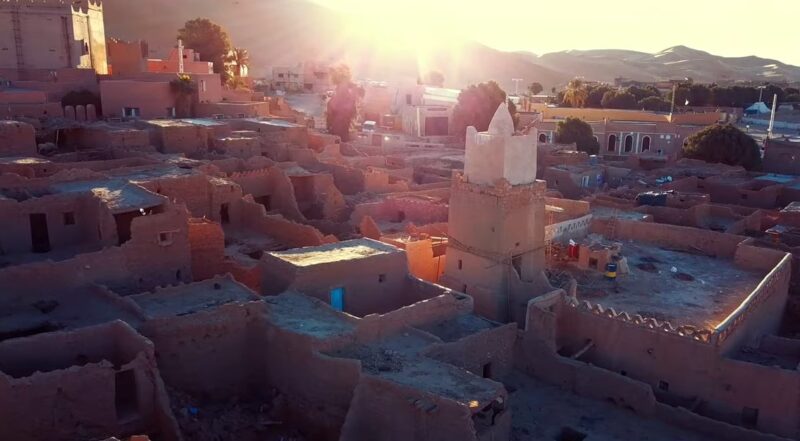As someone who spends more time planning the next trip than doing anything else, I’ve come to love the places that don’t show up on top-ten travel lists. North Africa has always fascinated me—it’s layered with culture, extreme geography, and traditions that shape daily life in beautiful, unpredictable ways.
While millions flock to Marrakech or Cairo, there’s a whole other side to this region that’s slower, quieter, and—in many ways—more powerful. If you’re the kind of traveler who wants to feel like an explorer rather than a visitor, these ten lesser-known destinations in North Africa are absolutely worth your time in 2025.
Key Highlights
- Real-life insights from a traveler who’s actually sought out quiet corners.
- Each destination includes why it matters, not just where it is.
- Best seasons to visit so you avoid extreme weather and packed weekends.
- Mix of nature, ancient history, and everyday life that’s unfiltered by mass tourism.
- Good balance between desert, coast, and mountain picks.
1. Tata, Morocco
Why go: Tata is where the raw desert meets the High Atlas in a town almost frozen in time. There’s a dry silence here that makes your thoughts feel louder—in the best way.
Most tourists never head this far south, which is a mistake. Tata has preserved Amazigh (Berber) culture like few other places. The surrounding villages are home to centuries-old mud-brick architecture, palm groves, and rock carvings that predate Islam.
Best time to visit: October to March – The heat softens, making it perfect for walking or biking through oases.
Travel tip: Use Tata as a base for exploring the Anti-Atlas Mountains. You’ll need a rental car for the small roads, but it’s worth every mile.
TililaTravel can help you plan Morocco Travel the right way and experience all the wonders of Morocco.
2. El Kef, Tunisia
Why go: I loved El Kef because it feels like Tunisia’s soul got tucked into a hillside and left undisturbed. It’s poetic, religious, historical—and quiet.
It’s perched on a ridge with layers of Roman ruins, Byzantine relics, and Ottoman influence. The Kasbah alone is worth the trip—peaceful, intact, and overlooking a sea of hills.
Best time to visit: Spring (April–May) when the air is cool, the views are green, and the wildflowers bloom.
Recommendation: Stop by the Dar Hassine Allani museum for a real sense of the town’s rich cultural blend. It’s like stepping into an aristocrat’s home from the 19th century.
3. Siwa Oasis, Egypt
Why go: I can say this with confidence—Siwa changed how I feel about Egypt. Yes, the Pyramids are jaw-dropping, but Siwa hits the soul.
Located close to the Libyan border, it’s not easy to get to, but when you do, you’re surrounded by date palms, salt lakes, and centuries-old traditions. People still speak Siwi, a Berber language, and use donkey carts instead of taxis.
Best time to visit: October to early December. You’ll skip the summer heat and the winter chill.
Don’t miss: The Oracle Temple of Amun—where Alexander the Great supposedly came to confirm his divine status. Also, swim in Cleopatra’s Pool; it’s not a myth.
4. Chenini, Tunisia
Why go: If you’ve ever dreamed of walking through a mountain village carved into stone, with white-domed mosques and a Martian-like landscape, this is your place.
Chenini is home to one of the last remaining Berber-speaking communities in Tunisia. The granaries built into the cliffs, known as “ksour,” are as impressive as any European fortress, but without the crowds or ticket booths.
Best time to visit: March–April or late autumn. Summer sun here can be brutal.
Local advice: Bring cash. No ATMs. And hire a local guide—they’re worth every dinar for context and access.
5. Tamegroute, Morocco
Why go: I found Tamegroute by accident on the way to the Sahara and ended up staying an extra day just for the pottery.
This tiny village south of Zagora is known for its striking green ceramics—every shade a product of an ancient glaze recipe known only here. But what really blew my mind? The 11th-century Islamic library with handwritten manuscripts in astronomy, law, and philosophy.
Best time to visit: Late fall or spring, when desert heat is tolerable and the workshops are buzzing.
Pro tip: You can take a quick workshop and actually make your own glazed bowl—it’s more rewarding than any souvenir.
6. Taghit, Algeria
Why go: Taghit feels like the Sahara whispered a secret and only a few people listened.
It’s a classic oasis town, sitting at the foot of a towering dune and lined with date palms. There’s music in the air, especially during local festivals when Gnawa rhythms echo against the sand.
Best time to visit: November–February. The light is incredible, and the temperatures are perfect for long walks.
Fun fact: Nearby petroglyphs suggest people lived here before the Sahara turned into a desert.
7. Ghadames, Libya
Why go: It’s one of the oldest desert cities in the world and probably the most beautifully organized. You walk shaded streets while knowing there are parallel rooftop paths above, just for women—social architecture at its best.
Yes, Libya’s political situation makes visiting tricky, but if the chance arises, Ghadames is a must.
Best time to visit: Late autumn when cultural festivals sometimes revive the old city.
Travel note: Watch for restoration updates. Ghadames is slowly being revived and may open up more by late 2025.
8. Wadi Halfa, Sudan
Why go: I stumbled upon Wadi Halfa by boat from Egypt, expecting a border stop. What I found was a warm town with rich Nubian culture and quiet lake views.
It’s not flashy. But it’s real. Conversations here linger longer. Tea shops fill at sunset. And the stories—especially about lost Nubian villages now underwater—are unforgettable.
Best time to visit: Winter (December–February). Summer here is unforgiving.
Bonus: Take the ferry across Lake Nubia to Aswan if it’s running—it’s a slow trip but deeply memorable.
9. Ghardaïa, Algeria
Why go: Ghardaïa isn’t just a city—it’s five ancient towns woven together in the M’zab Valley. Built for desert survival, the architecture is so efficient that even Le Corbusier praised it.
This place taught me what sustainable living looks like before the term existed. Water systems, wind-catching towers, communal ethics—it’s all here.
Best time to visit: February–March for mild weather and access to cultural festivals.
Respect: This is a conservative area with strong religious traditions. Dress modestly, and be observant.
10. Ksar Ghilane, Tunisia
Why go: This tiny desert outpost is one of the southernmost oases in Tunisia—and one of the most atmospheric. There’s a thermal spring under the palm trees, and the ruins of a Roman fort just a short ATV ride away.
You come here to be surrounded by sand, stars, and silence. And maybe have mint tea under a palm tree after a dusty ride.
Best time to visit: October to April. Summer can hit 45°C easily.
Stay tip: Opt for a tented camp under the stars instead of a guesthouse. The night sky out here is unreal.
Why These Places Deserve the Spotlight
Traveling to well-known places has its charm. But the moments I remember most—the ones I tell friends about or revisit in my mind months later—happened in places like Tata, Chenini, and Siwa. These aren’t just hidden gems because they’re quiet. They’re valuable because they make you feel connected, curious, and fully present.
Next time you’re planning a trip to North Africa, I hope you’ll skip the obvious at least once. You won’t regret it.

